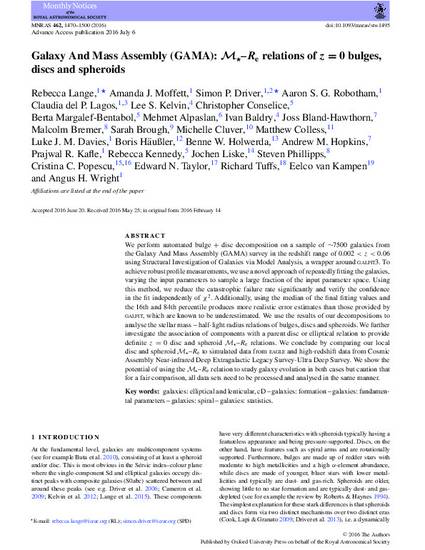
We perform automated bulge + disc decomposition on a sample of ∼7500 galaxies from the Galaxy And Mass Assembly (GAMA) survey in the redshift range of 0.002 < z < 0.06 using Structural Investigation of Galaxies via Model Analysis, a wrapper around GALFIT3. To achieve robust profile measurements, we use a novel approach of repeatedly fitting the galaxies, varying the input parameters to sample a large fraction of the input parameter space. Using this method, we reduce the catastrophic failure rate significantly and verify the confidence in the fit independently of χ2. Additionally, using the median of the final fitting values and the 16th and 84th percentile produces more realistic error estimates than those provided by GALFIT, which are known to be underestimated. We use the results of our decompositions to analyse the stellar mass – half-light radius relations of bulges, discs and spheroids. We further investigate the association of components with a parent disc or elliptical relation to provide definite z = 0 disc and spheroid M–Re relations. We conclude by comparing our local disc and spheroid M–Re to simulated data from EAGLE and high-redshift data from Cosmic Assembly Near-infrared Deep Extragalactic Legacy Survey-Ultra Deep Survey. We show the potential of using the M–Re relation to study galaxy evolution in both cases but caution that for a fair comparison, all data sets need to be processed and analysed in the same manner.
Lange, Rebecca, et al. "Galaxy And Mass Assembly (GAMA): M⋆--Re relations of z = 0 Bulges, Discs and Spheroids." 2016. Monthly Notices of the Royal Astronomical Society 462(2): 1470-1500.

This article has been accepted for publication in Monthly Notices of the Royal Astronomical Society Copyright: 2016. Published by Oxford University Press on behalf of the Royal Astronomical Society. All rights reserved.
https://doi.org/10.1093/mnras/stw1495